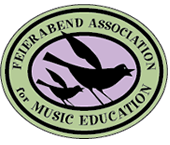Who doesn’t love a good book? Books are like old friends; we never get tired of them!
Here are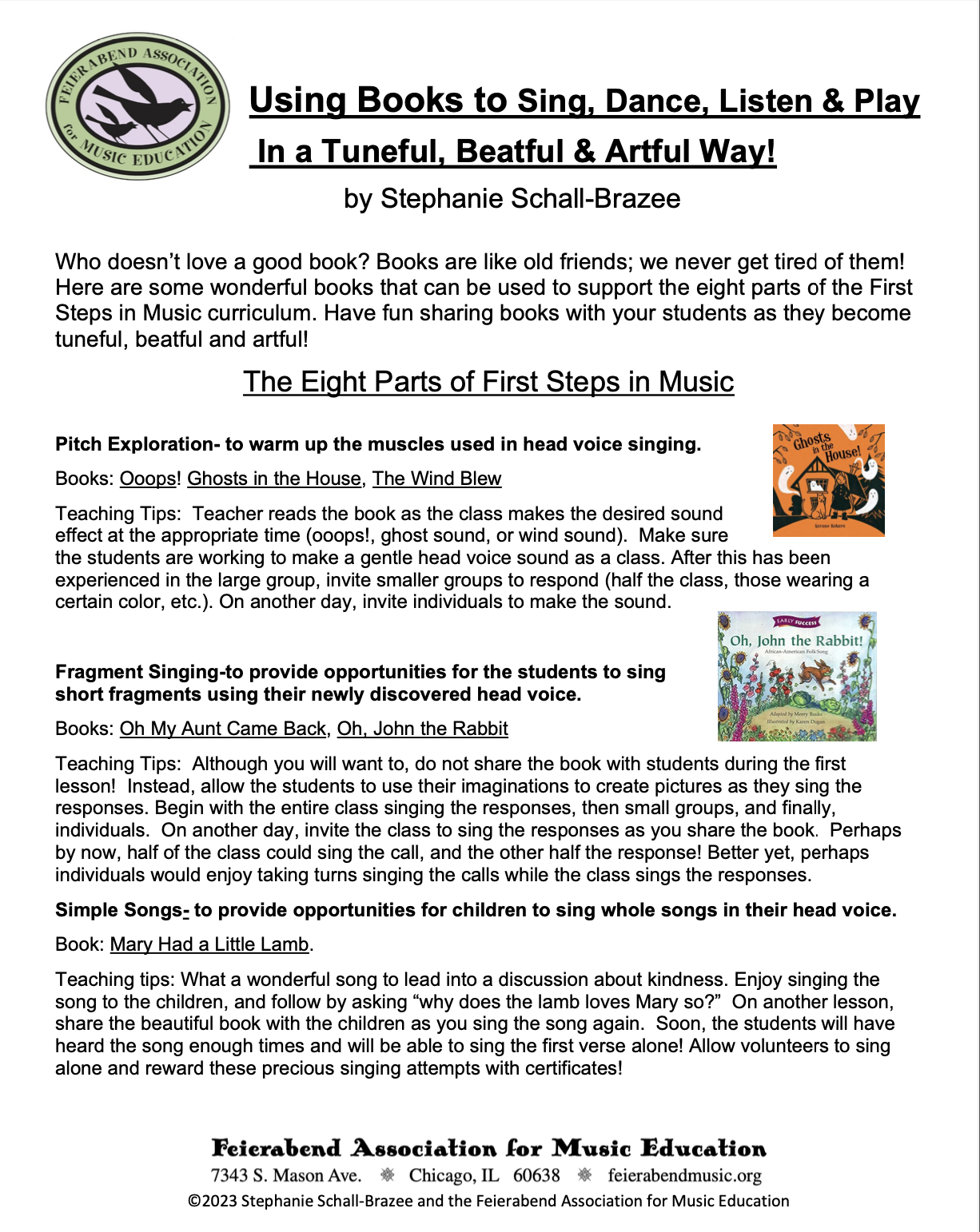 some wonderful books that can be used to support the eight parts of the First Steps in Music curriculum. Have fun sharing books with your students as they become tuneful, beatful and artful!
some wonderful books that can be used to support the eight parts of the First Steps in Music curriculum. Have fun sharing books with your students as they become tuneful, beatful and artful!
The Eight Parts of First Steps in Music
Pitch Exploration – to warm up the muscles used in head voice singing.
Books: Ooops! Ghosts in the House, The Wind Blew 
Teaching Tips: Teacher reads the book as the class makes the desired sound effect at the appropriate time (ooops!, ghost sound, or wind sound). Make sure the students are working to make a gentle head voice sound as a class. After this has been experienced in the large group, invite smaller groups to respond (half the class, those wearing a certain color, etc.). On another day, invite individuals to make the sound.
Fragment Singing – to provide opportunities for the students to sing short fragments using their newly discovered head voice.
Books: Oh My Aunt Came Back, Oh, John the Rabbit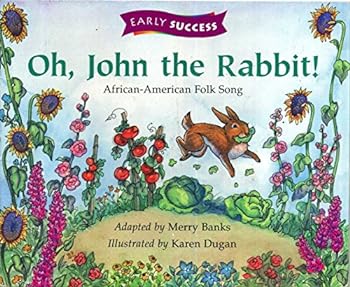
Teaching Tips: Although you will want to, do not share the book with students during the first lesson! Instead, allow the students to use their imaginations to create pictures as they sing the responses. Begin with the entire class singing the responses, then small groups, and finally, individuals. On another day, invite the class to sing the responses as you share the book. Perhaps by now, half of the class could sing the call, and the other half the response! Better yet, perhaps individuals would enjoy taking turns singing the calls while the class sings the responses.
Simple Songs – to provide opportunities for children to sing whole songs in their head voice.
Book: Mary Had a Little Lamb.
Teaching tips: What a wonderful song to lead into a discussion about kindness. Enjoy singing the song to the children, and follow by asking “why does the lamb loves Mary so?” On another lesson, share the beautiful book with the children as you sing the song again. Soon, the students will have heard the song enough times and will be able to sing the first verse alone! Allow volunteers to sing alone and reward these precious singing attempts with certificates!
Arioso – to allow the children opportunities to create their own tunes.
Books: Little Green, The Pout Pout Fish, The Gerda Muller Seasons Gift Collection 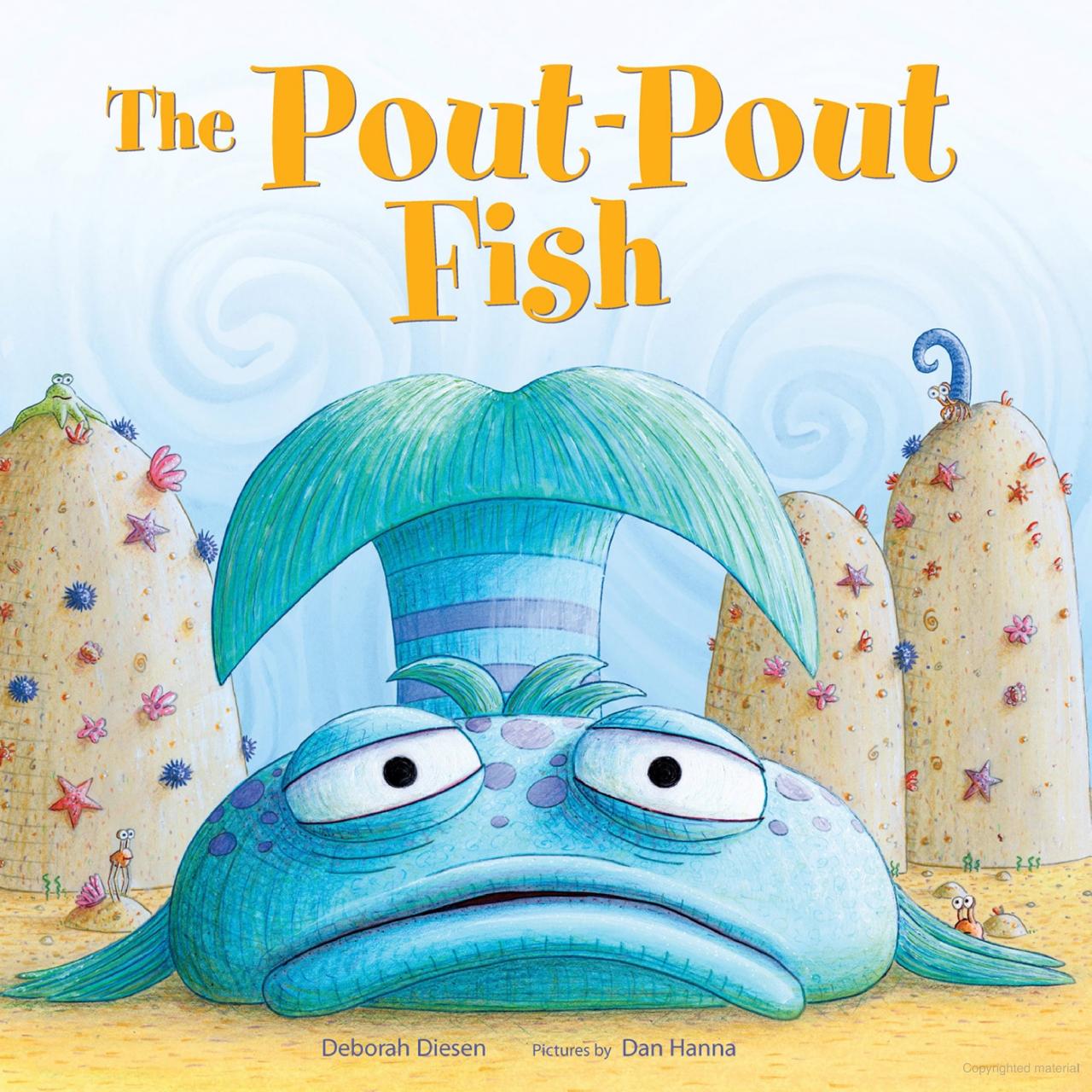
Teaching tips: Refer to pages 68-70 in First Steps in Music for Preschool and Beyond for more ideas.
- After reading the story Little Green to set the stage, pull out a humming bird puppet and invite the class to hum tunes as a group. On another day, allow students to hum tunes with a partner, and finally, invite individuals to hum their tunes for the class.
- After several experiences humming tunes, begin leading the students to begin creating tunes with text. Ease students into this by choosing books such as The Pout-Pout Fish which has a section of text that repeats throughout the story. Once students are very familiar speaking the repeated text, ask them to sing the text.
- After students are comfortable creating tunes with familiar text, allow opportunities for them to create text and tune using books with wonderful pictures. I love Gerda Muller’s Seasons collection. Simply hold up a page and invite students to sing three things about what they see. Allow them to practice this as a group, partners, and finally individually.
Songtales – to give children the opportunity to listen to expressive singing
Books: GIA.com has many wonderful song tale choices by John Feierabend. In addition, one of my favorites is Over in the Meadow by Langstaff.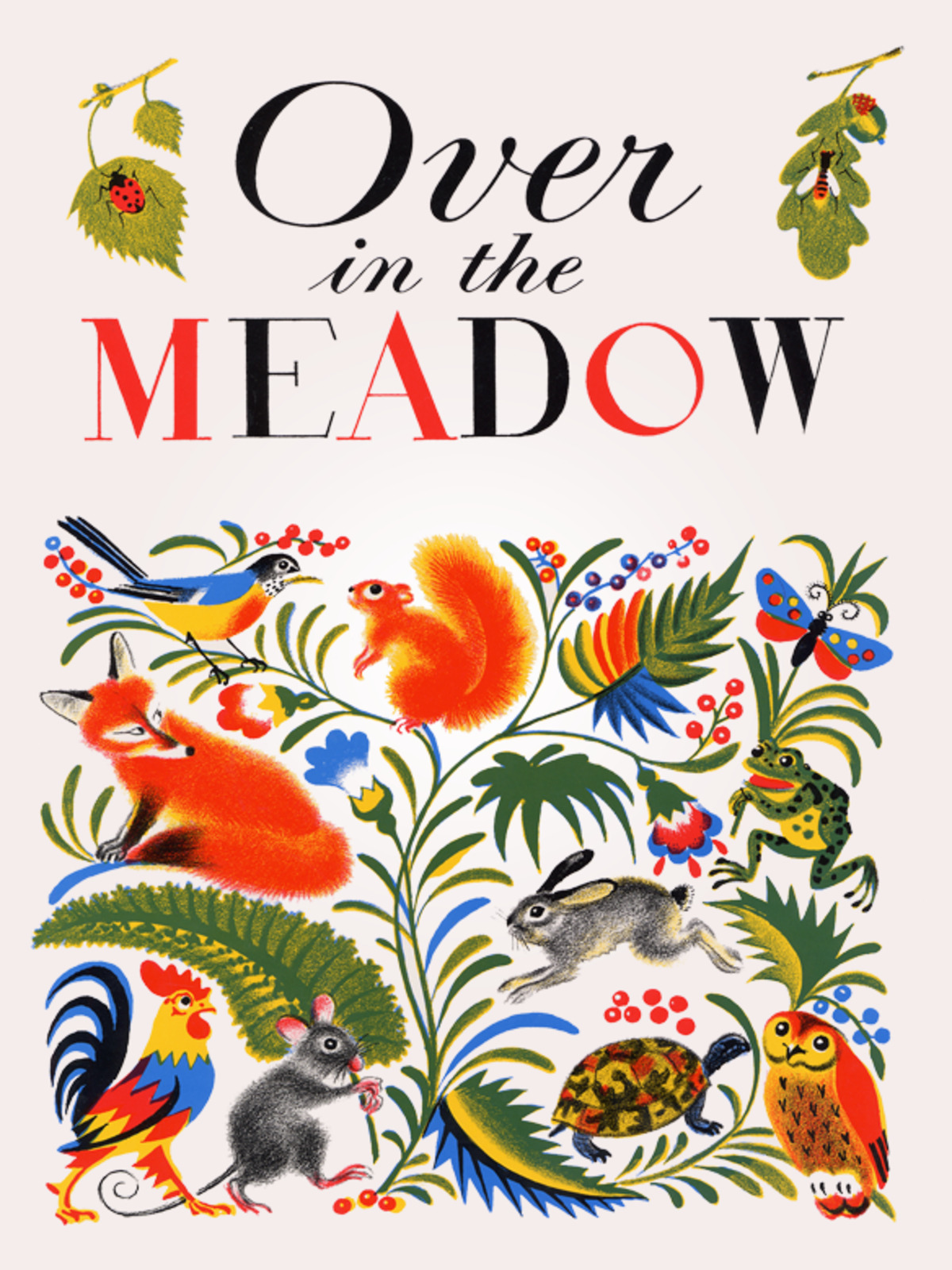
Teaching Tips: A great way to end a class is to invite students to sit on the floor in front of you as you sing a song tale to them. Because you are also teaching audience behavior, remind the students how to be good listeners and to applaud at the end. Make sure you have the song tale memorized so you can use good eye contact while you sing expressively to the students. For Over on the Meadow, a possible sequence could be as follows:
- Lesson one: Without sharing the book, teacher sings half of the song to the students.
- Lesson two: Without sharing the book, teacher sings the rest of the song
- Lesson three: Without showing the book, teacher sings the entire song as the students supply the numbers and the animals.
- Lesson four: Teacher shares the book while singing. By this time, the students are able to sing the baby animal responses.
Movement Exploration – to help children explore different ways to move their bodies.
Book: Rosie’s Walk (Thank you to Lillie Feierabend for sharing this wonderful idea with me several years ago!) 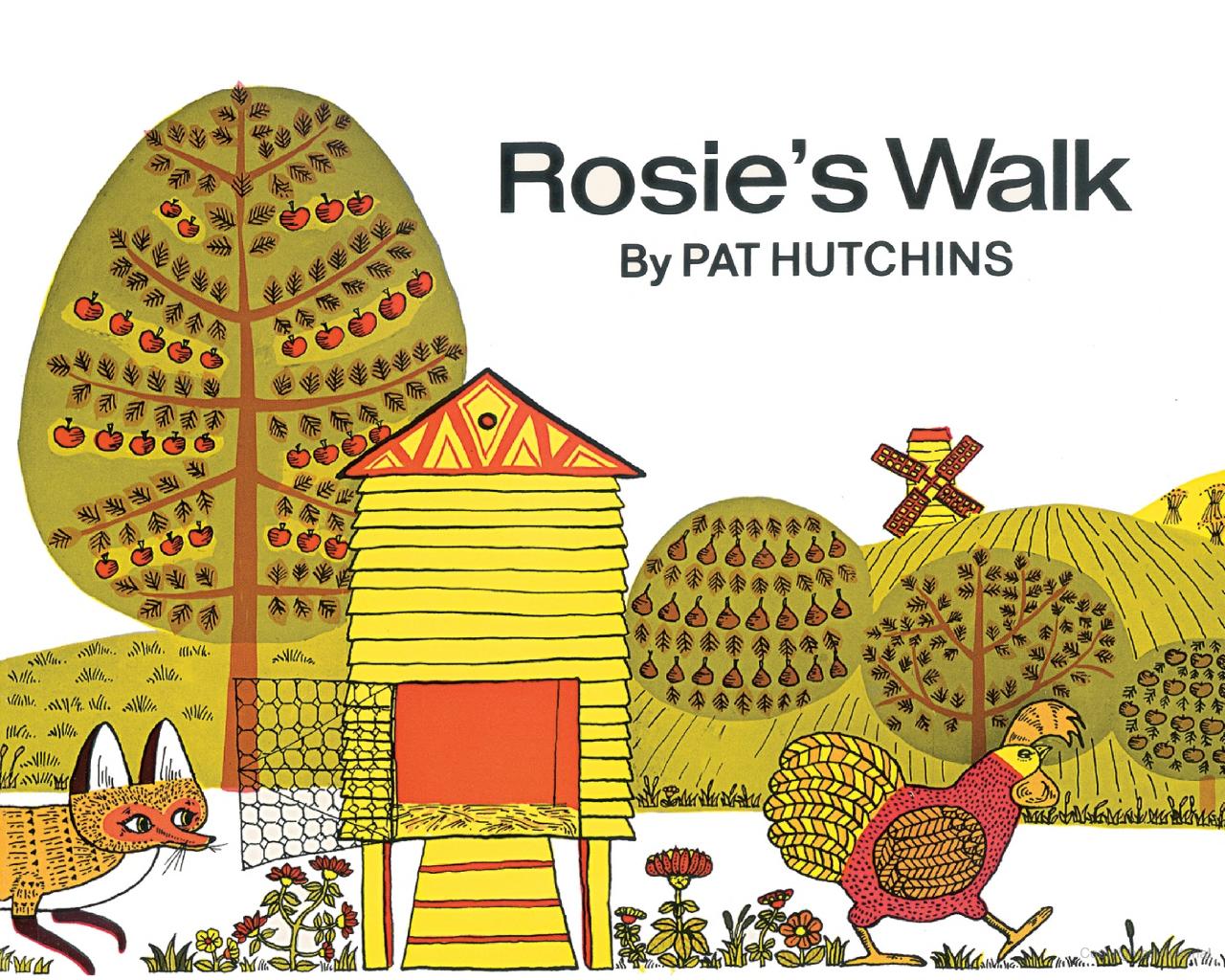
Teaching Tips:
- Lesson one: Before reading the book, ask the students to move around the room like Rosie the Hen will in the story (say: “move across a farm, around a pond, over a haystack, under a bee hive”, etc)
- Lesson two: Without showing the book, teacher reads the story while the students move like Rosie the Hen.
- Lesson three: Repeat the second lesson adding background music such as “The Children’s March” by Percy Grainger.
- Lesson four: Allow the students to see the pictures as you read the story. They will be delighted!
Movement for Form and Expression – to allow the children opportunities to experience the form and expressiveness in music
Book: A – Tisket, a- Tasket 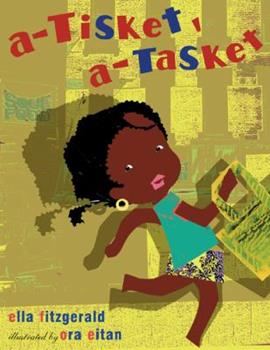
Teaching Tips: Play the chasing game (First Steps in Preschool and Beyond, p. 138) until every child has had a turn to be chased. On a later lesson share the book with a recording of Ella Fitzgerald singing the song.
Movement with the Beat – to help children develop an intuition for the steady pulse and how it is grouped in twos and threes
Book: Bling Blang 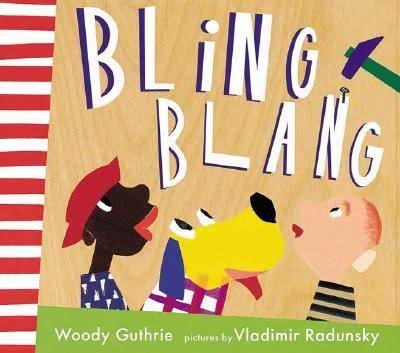
Teaching Tips:
- Begin by passing a set of claves or a woodblock around the circle for individuals to play while the teacher sings the chorus of Bling Blang following the child’s tempo.
- On another lesson, share the book and sing the entire song, allowing the students to sing the chorus.
- On another lesson play a recording of Woodie Guthrie singing the song as the students look at the book.
Resources
Baker, Little Green, Red Wagon Books, 2005.
Banks, Oh John the Rabbit, Houghton Mifflin, 1996.
Diesen, The Pout- Pout Fish, Farrar Straus Giroux, 2009.
Eitan, A-Tisket a-Tasket, Philomel Books, 2003.
Feierabend, First Steps in Music for Preschool and Beyond, GIA, 2020.
Feierabend, Oh My Aunt Came Back, GIA, 2001.
Hutchins, Rosie’s Walk, Little Simon, 1968.
Hutchins, The Wind Blew, Scholastic, 1974.
Kohara, Ghosts in the House, Square Fish, 2008.
Kline, Ooops!, Albert Whitman & Company, 1988.
Langstaff, Over in the Meadow, Voyager Books, 1985.
BcMillan, Mary Had a Little Lamb, Scholastic, 1992.
Muller, The Gerda Muller Seasons Gift Collection, Floris Books, 2005.
Radunsky, Bling Blang, Walker Books, 2000.
 Stephanie Schall-Brazee is an elementary general music teacher for the Traverse City Area [Michigan] Public Schools, and an endorsed Teacher Trainer for First Steps in Music and Conversational Solfege. She has served two terms on the board for the Feierabend Association for Music Education (FAME) and is currently serving as President-Elect. Stephanie is also on the summer faculties of Lakeland University and the Hartt School Kodaly Certification programs.
Stephanie Schall-Brazee is an elementary general music teacher for the Traverse City Area [Michigan] Public Schools, and an endorsed Teacher Trainer for First Steps in Music and Conversational Solfege. She has served two terms on the board for the Feierabend Association for Music Education (FAME) and is currently serving as President-Elect. Stephanie is also on the summer faculties of Lakeland University and the Hartt School Kodaly Certification programs.
